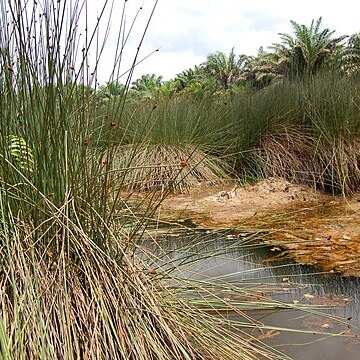Perennial herbs with rush-like habit. Rhizome woody, horizontally creeping. Stems erect, terete, transversely septate within. Leaves reduced to bladeless sheaths open in front, the margins overlapping. Inflorescence consisting of a single spikelet, apparently lateral owing to the single erect involucral bract continuing the stem. Spikelet terete, many-flowered. Rachilla thick, spongious, conical, persistent. Glumes chartaceous, spirally arranged, very densely imbricate, caducous with the nut, some lower ones empty. Flowers strongly dorsiventrally compressed. Hypogynous scales numerous, (up to c. 15?), the lowest 2 transversal, opposite, free, boat-shaped, ciliolate on the keel, the remaining ones fascicled (probably spiral), linear-lanceolate, acute, flat or nearly so. Stamens several (up to c. 10?), one in the axil of each of the keeled scales, the others solitary in the axils of the outer flat scales; anthers linear, shortly apiculate. Ovary terminal; style continuous with the ovary, slightly incrassate at the base, the base persistent on the nut as a short beak; stigmas 2, long. Nut strongly dorsiventrally compressed, plano-convex, acutely keeled on the margins.
More
Perennials. Rhizomes woody. Culms erect, terete, with transverse septa. Leaves basal, without a leaf blade. Primary involucral bracts subulate, cylindric, erect. Inflorescence a single spike, pseudolateral, with many spirally arranged imbricate glumelike bracts. Basal glumelike bracts empty, most subtending pseudospikelets. Pseudospikelets with 2 outer strongly keeled glumes and many non-keeled glumes, most subtending 1 stamen and a solitary apparently terminal female flower. Perianth bristles absent. Stigma 2, long, slender. Nutlet plano-convex, apex not beaked.

